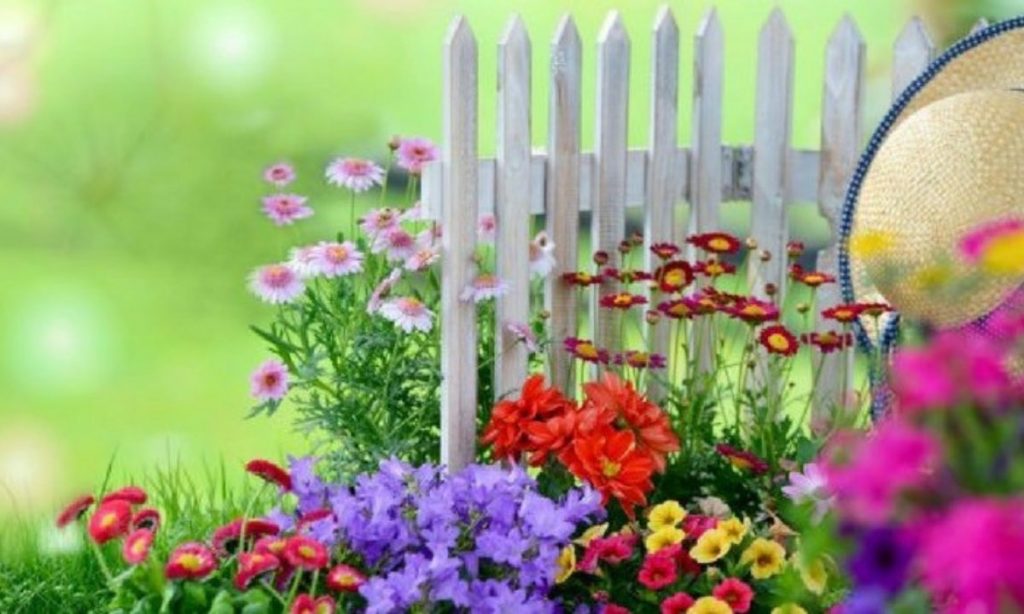Gardening for dummies (yoga for dummies, accounting for dummies, sewing for dummies) and every other “for dummies” book has been designed for people looking to cut to the chase of whatever talent or information they’re looking to acquire.
You hear “something for dummies” and you know that you’re going to get good, straight-forward, easily follow the information that will help you do whatever it is you’re trying to do.
That’s what I’m hoping to accomplish throughout this backyard landscaping website. I’m trying to give Gardening for Dummies advice to people looking to make improvements in their landscape and/or acquire basic gardening skills in a way that’s relatively easy and not overly time consuming. Anyone can create a garden even if you don’t have these skills already!
So let’s get down to some good gardening for dummies advice to help you establish your garden, or make the most of what you already have.
Before planting any type of garden, be it a basic herb garden, a border garden, a childrens garden, a container flower garden or a vegetable garden, you’ll need to develop a backyard landscape design.
Once you have your design all figured out, you’ll need to determine what type of plants to use in your design.
A landscaping plant guide will help you get clear on the different types of plants available, and what they can bring to your design.
Gardening for Dummies – First decisions
How much money are you willing to spend, and where do you want to purchase your yard plants?
This question will often be decided by answering these next questions: How quickly you’d like to see your backyard landscaping plan unfold. Do you want it to be established within a year or two, or do you want it to grow and develop over time?
And of course, these questions will depend upon the type of garden you’re going to establish.
You have the option of purchasing yard plants in various stages of the growth process. Plants that are small, or not yet developed, are generally more cost effective, but take more time to establish.
Plants that are larger, or that are purchased at a local nursery, tend to be pricier and may require more maintenance to ensure a nice transfer to your backyard landscape.
It’s important to know yourself and your time limitations. I find that I don’t do well with high maintenance landscaping plants, as I don’t always give them the extra TLC that they need to adequately establish themselves in their new environment.
My personal preference is to add landscaping plants to my backyard in an early stage of their growth. Not only do I enjoy seeing the change in their growth habits over the years, but I find that young plants are more hardy than their older counterparts.
Younger plants haven’t had a chance to establish themselves anywhere, and therefore aren’t as traumatized by the planting process. They tend to work well with the “survival of the fitest” mentality in my yard.
Younger plants are also more cost effective, so if I end up losing one or two, it’s not quite as devastating as losing a large, pricey plant. The little troupers that are determined to survive are the ones that make it in my yard, and continue to flourish for years to come!
Gardening for Dummies – Go with what you like!
Browse through the landscaping plant guide, jot down any plants that are of particular interest to you, and decide whether or not they’ll work in your yard.
Identify the areas in your yard that you’d like to plant, along with many distinct characteristics, such as:
- window box
- annual flowers (you only want the flowers for one season)
- location in full sun
- colors – purple and yellow
- planter is 36 inches long
- 10-15 inch tall plants with hanging vines
Taking this information, you can narrow down your search for the types of plants that you will need for that location. This info can be created for any area:
- under oak tree
- perennial plants (you want these plants to return every year)
- location in part-full shade
- no color preference
- planting area is approximately 50 square feet
- a variety of heights up to 36 inches tall
There are even great shade loving perennials that flourish without sunlight!
